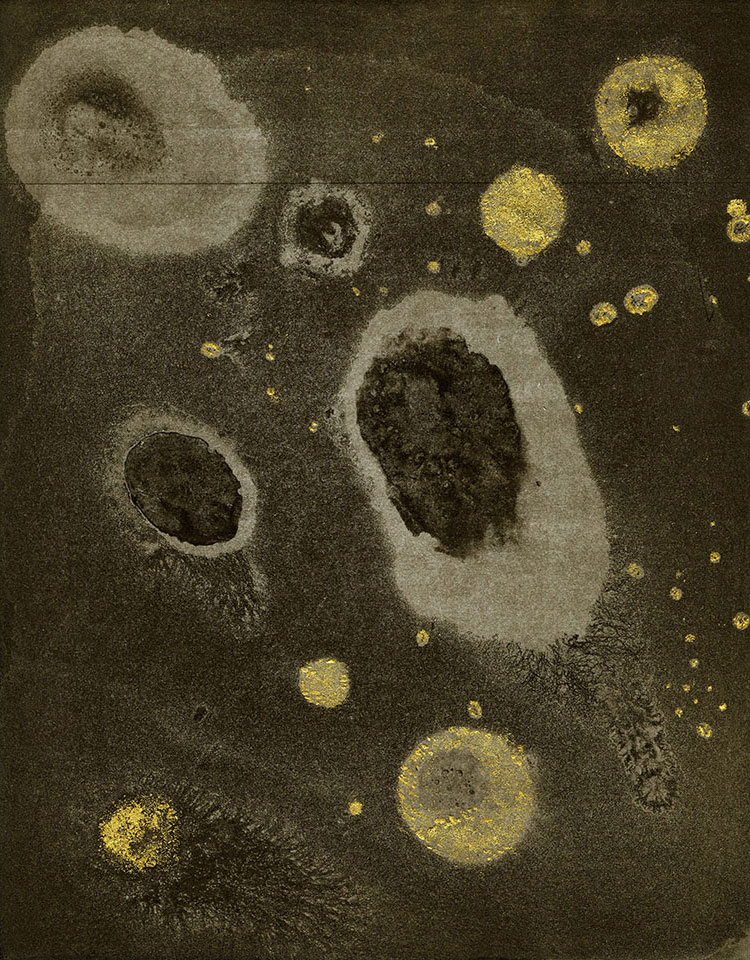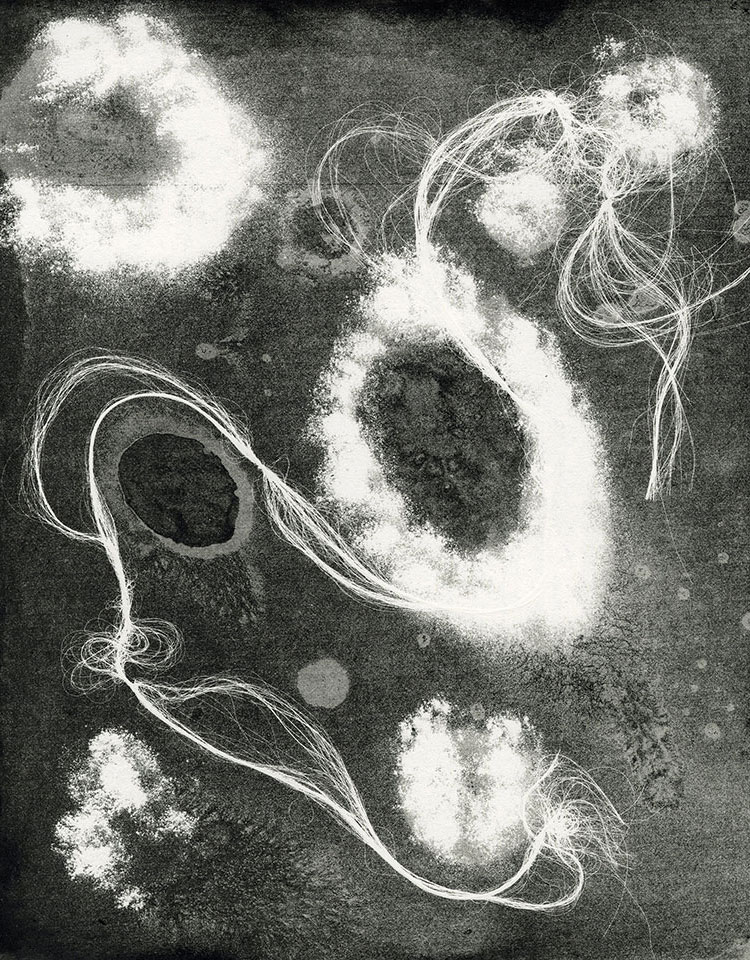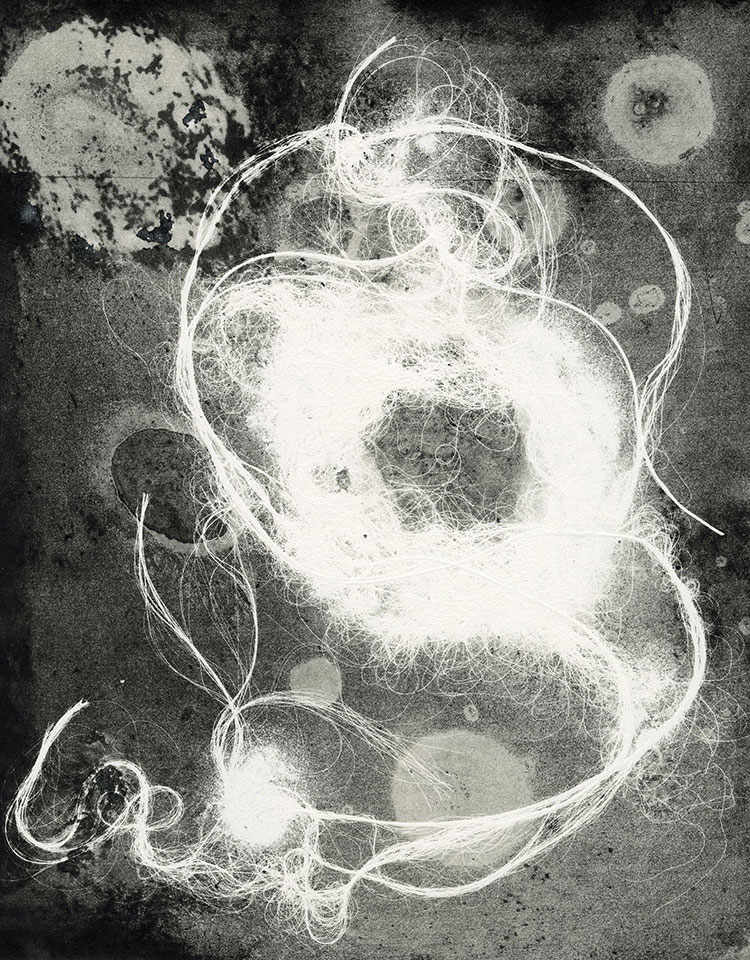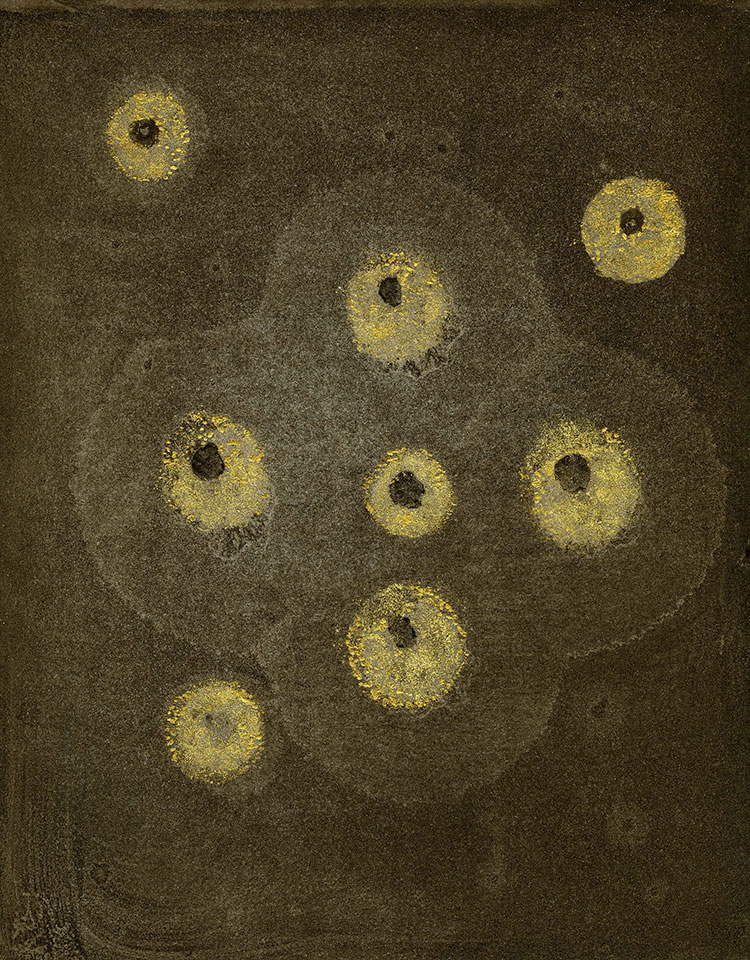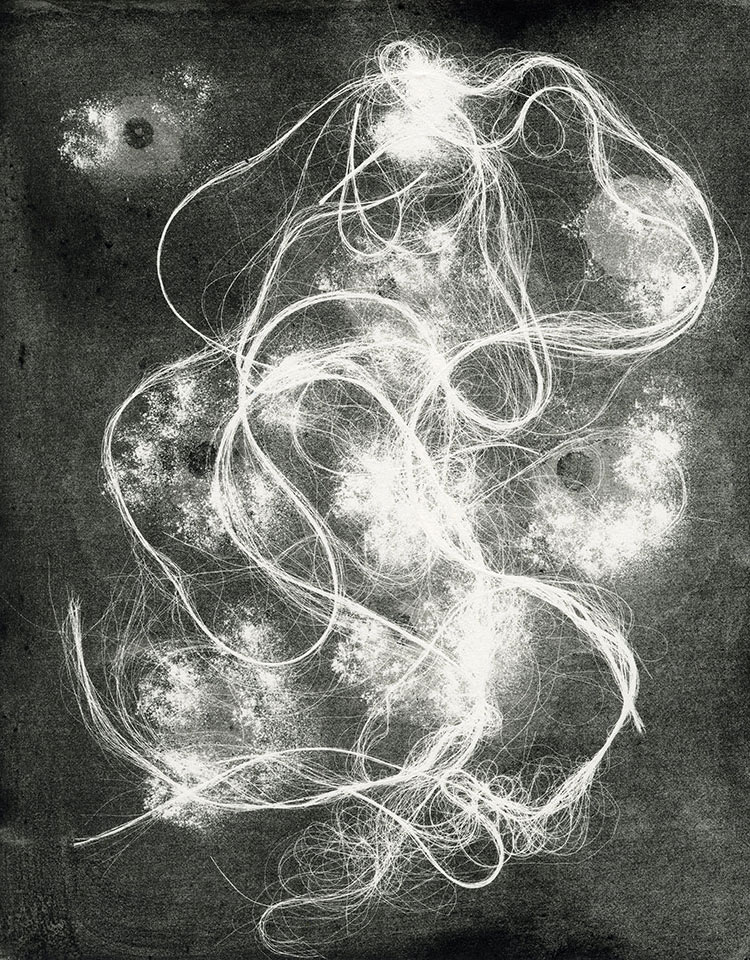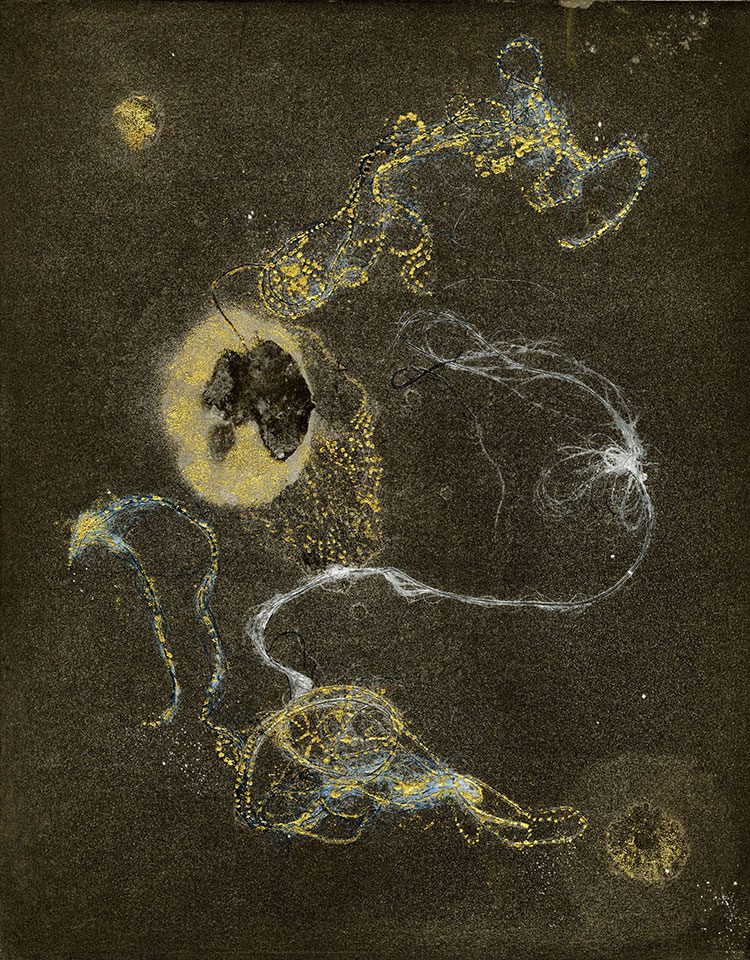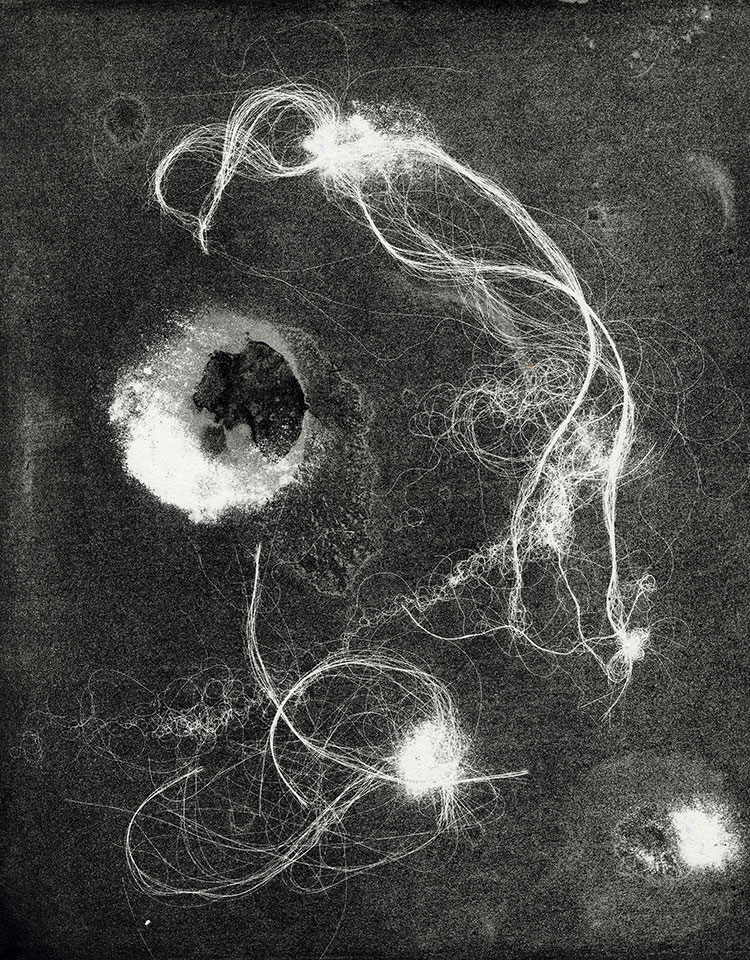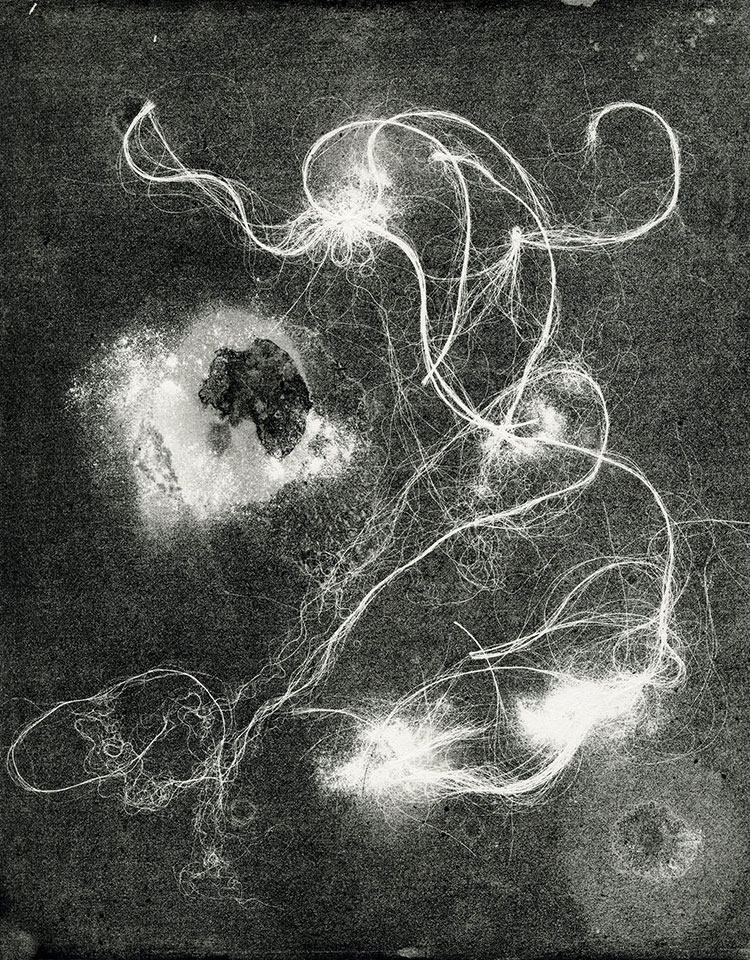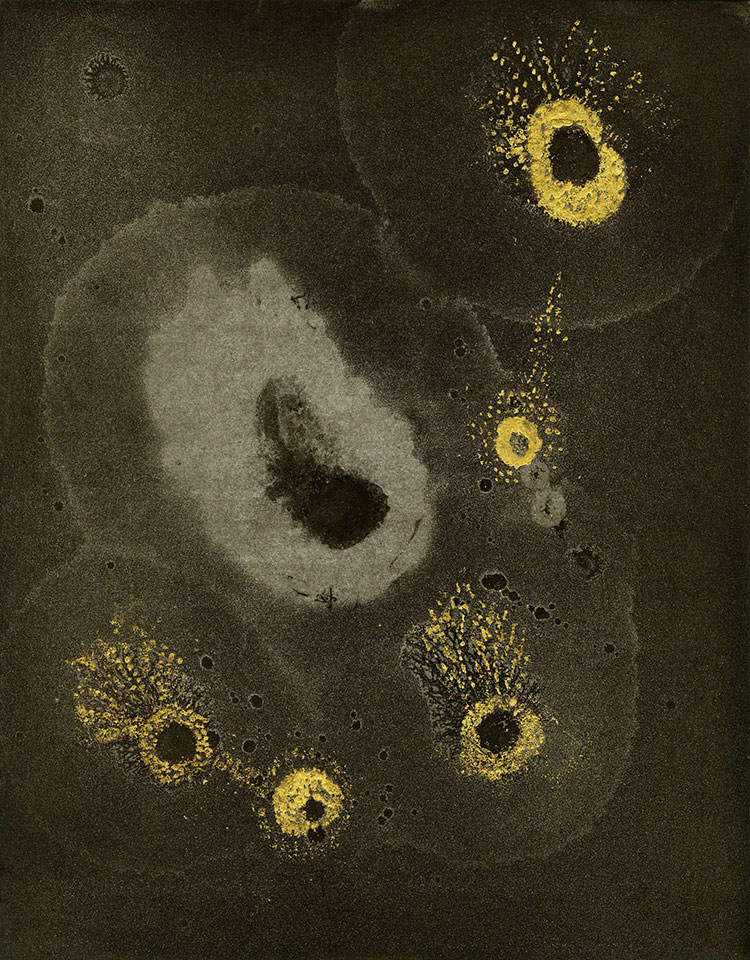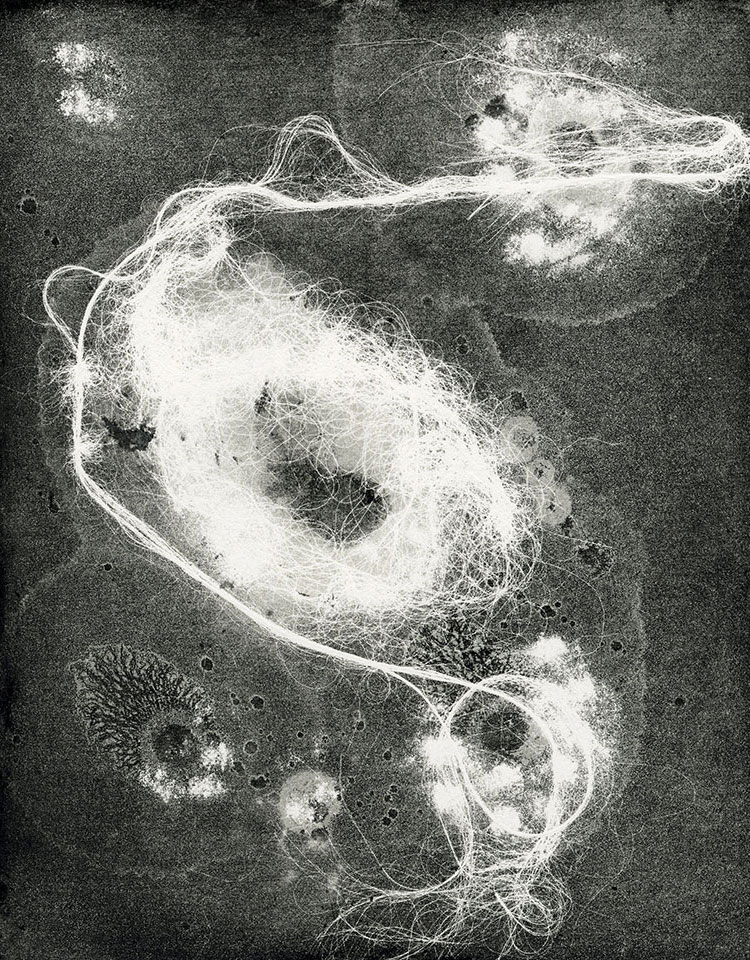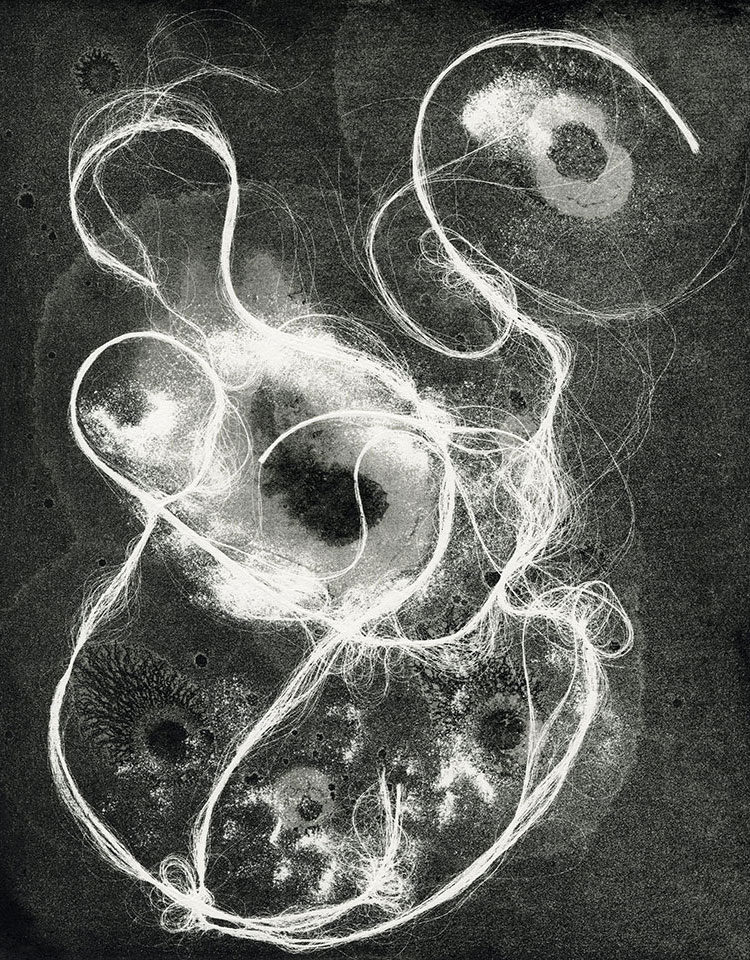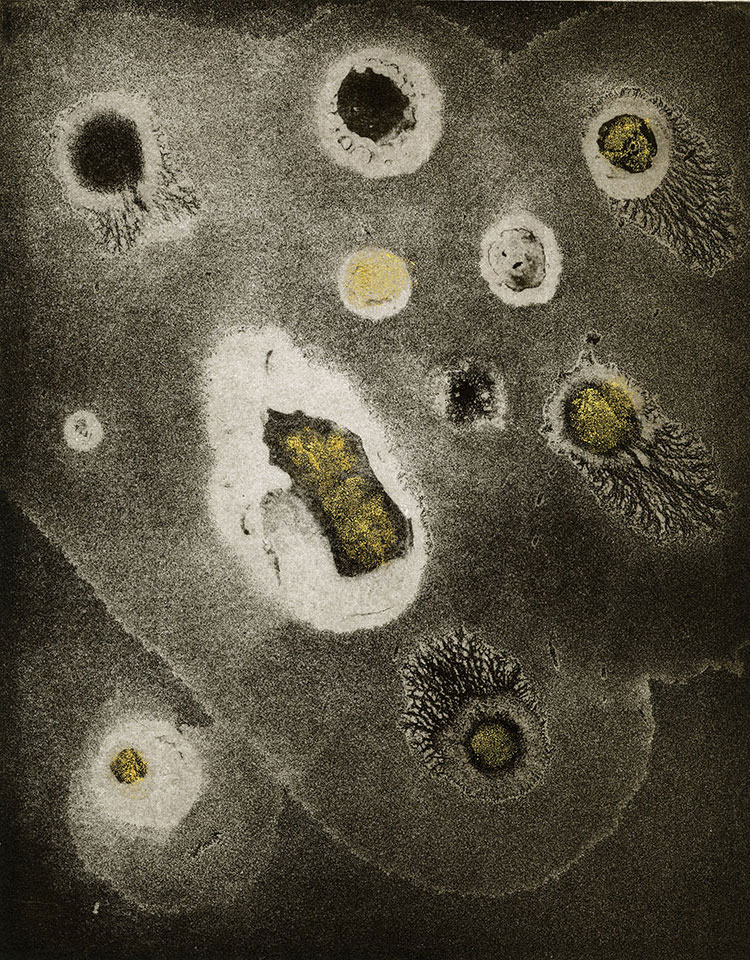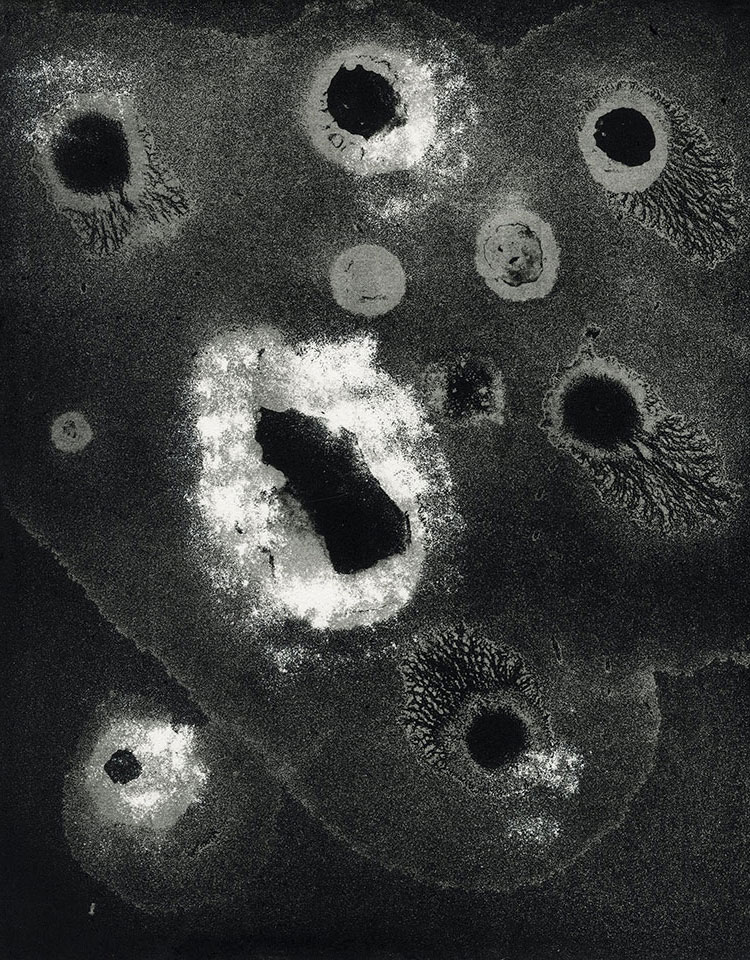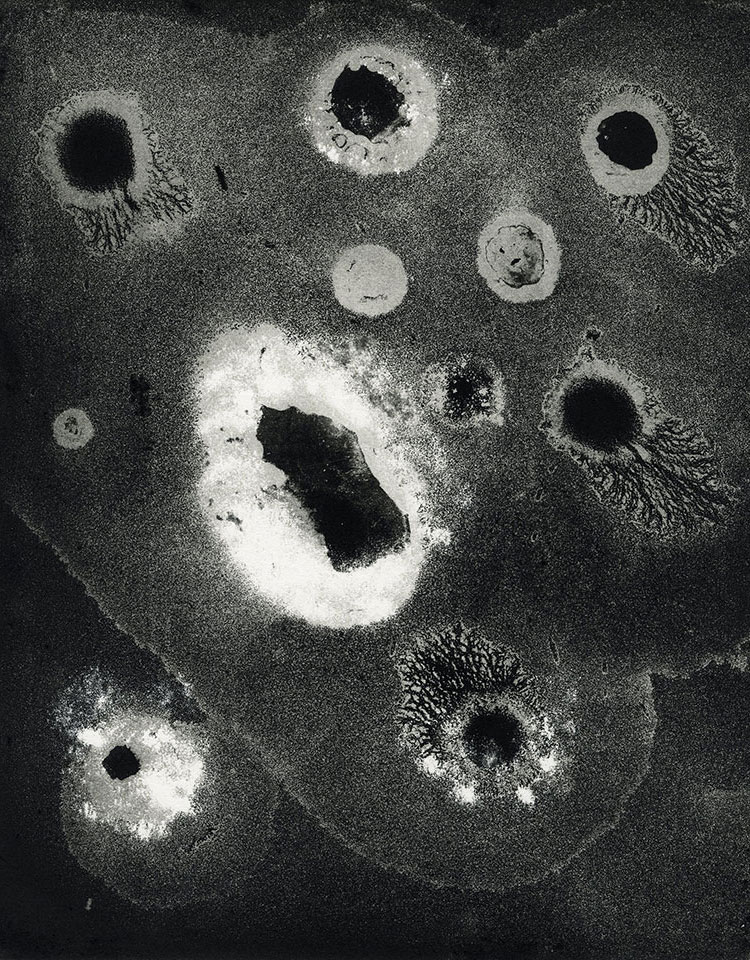Modern Alchemy: towards a more sustainable chemistry
Edinburgh University
Winter 2023
A collaboration between artist Susan Aldworth and Dr Amanda Jarvis at Edinburgh University, facilitated by ASCUS with curatorial support from Griselda Goldsbrough.
Susan Aldworth was awarded a commission to make a series of experimental works in response to Dr Jarvis’s research whose long-term aim is to develop more sustainable catalytic chemistry. 85% of all products manufactured involves catalysis, and her research is looking for ways to find ways to transform the bonds in more abundant metals to deliver synthetic methods to improve the environmental sustainability of organic chemistry.
To mirror the ambition of Jarvis’ laboratory to replace expensive metals by new reactions in base metals, Aldworth decided to work in etching, switching from expensive copper and zinc etching plates to cheaper steel plates. By throwing chemicals into the aquatint resin before it was fired onto the plate surface, Aldworth developed a visual equivalence of catalysis– capturing a moment of chemical reaction.
Dr Jarvis mixed different chemicals including Aqua Regia for Aldworth to etch her steel plates in the laboratory. The artist’s studio and the laboratory merged as sites of experimentation. Aqua Regia (a mix of 1 :3 nitric acid and hydrochloric acid) was used by alchemists to dissolve gold. It had a strange effect on the steel plates creating white marks which didn’t print as expected. Aldworth would later apply gold leaf to some of the prints to suggest their relationship to Alchemy. Aldworth produced 54 prints from 13 plates in this experimental suite.
» Susan Aldworth: Visual Equivalents by Gill Saunders, Senior curator of Prints at the V&A.
Published in Printmaking Today – Winter 2023 – Issue 128 – December 2023
